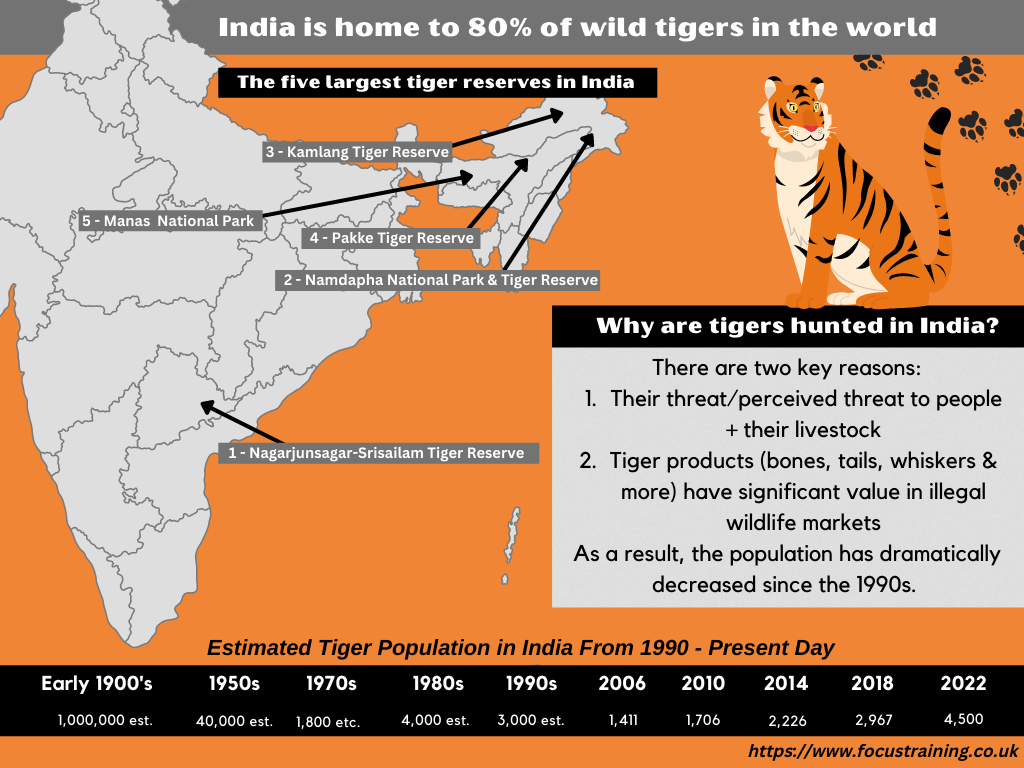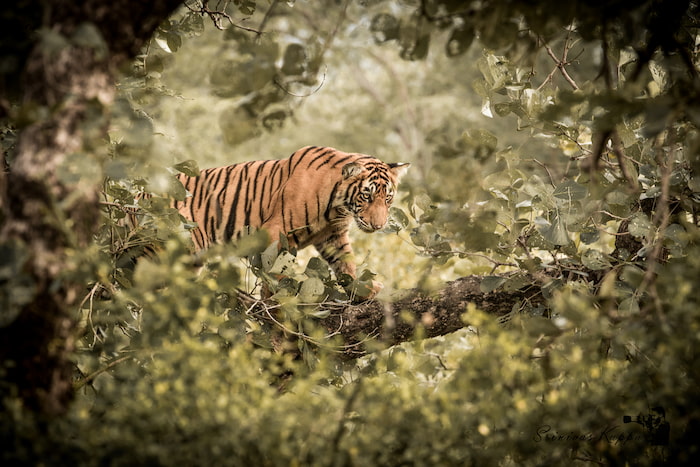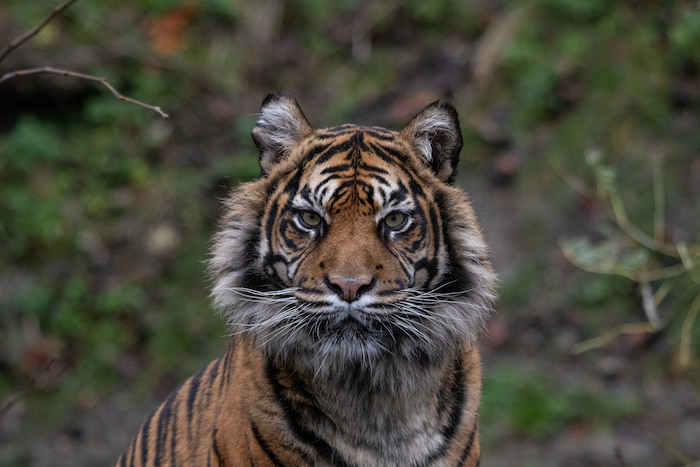2022 is the year of the tiger according to the Chinese zodiac calendar. Despite this, the last century has witnessed the world’s wild tiger population devastated by both hunting and habitat destruction. Attempts to restore and rebuild the population, such as Project Tiger, have reputations for their status as some of the most successful conservation projects in the world - but figures have failed to reach their previous heights.
The wild tiger population in India was estimated at 1,000,000 at the start of the 1900s. Since this time, the figure has been unstable, dropping to its lowest level in 2006, with 1,411 wild tigers, and is currently estimated to be roughly 4,500.
Google Trends reported a 100% increase in searches for ‘protection of wildlife, in the UK as of October 2023. From Netflix’s Tiger King, David Attenborough’s new show, Wild Isles, and the increased focus on environmentalism that is driven by individuals such as Greta Thunberg, it is evident that there has been a rise in wanting to preserve our planet. One key way of doing this is protecting endangered species, including the world’s most popular, iconic big cat: the tiger.
Why is Tiger Conservation a Political Issue?
The main reason that tiger conservation has become a political issue is due to how drastically population rates have dwindled. The reality is that the extinction of tigers is not a localised problem but a global issue. As a result, governments in Tiger Range Countries (TRC), such as India, Bhutan and Nepal, have been forced to intervene, introducing policies and attending ‘Tiger Summits’, events dedicated to agreements to protect tigers. There has similarly been the Global Tiger Initiative (GTI), which was formed in 2008 to act as a global alliance of international organisations, civil societies, governments, private sector entities and conservation and scientific communities to save wild tigers.
One key political measure to protect tigers was the relocation of human populations to create tiger reserves. Families in India were paid the monetary sum of a ‘relocation package’ of RS15 Lakh. This figure equates to roughly £15,750 or $18,200, with RS15 Lakh as the median house price in a metropolitan area as of 2016. Landowners are additionally allowed to keep and farm their land within the tiger reserves - they are only prohibited from settling there. As such, many individuals relocate nearby, benefitting from the continual use of their land and a new home by utilising the Government’s ‘relocation’ money.
While schemes, such as offering a relocation package, have been very successful, there are downsides to Government-enforced conservation. As Governments struggle with significant other tasks, responsibilities and problems (such as the Covid-19 pandemic), alongside some suffering from limited funds, this can complicate the effectiveness of intervention tactics. In addition, the very act of creating laws is the responsibility of the Government, meaning that when poaching was made illegal in the 1972 Wildlife Protection Act, many involved in the trade resented the authority.
In addition, there have been significant problems for residents of areas situated nearby tiger reserves. While locals have committed to conservation, allowing tigers to recolonise their former land, the big cats have repaid their efforts by terrorising and attacking communities. As recently as October 2022, a male tiger, nicknamed the “man-eater of Champaran”, was shot near the Valmiki Tiger Reserve after killing nine people. While large, the tiger reserves do not have enough space to house the territorial cats - meaning they wander out into human-dominated spaces, with tragic consequences for both species.
The History of Tiger Conservation
Project Tiger, the landmark programme, was launched by the Indian government in April 1973. As a result of the scheme, 53 areas in India have become designated tiger reserves, comprising 38,000 square kilometres of protected wilderness. These spaces are home to tigers, plants, temples and other exotic animals. Human interference across the reserves and similarly dedicated forest spaces are strictly prohibited, with such zones wholly committed as spaces for tigers to hunt, live and populate.
However, the necessity for conservation became evident a long time before 1973. The wild tiger population in India was estimated at circa 1,000,000 in the 1900s before drastically dropping to est. 40,000 in the 1950s - meaning over 960,000 tigers were killed across the country in the space of 50 years.

Why were so big cats hunted during this time? Several reasons. The 19th century in India was known as the ‘Skikar Era’. From British India onwards, tigers were seen as a threat to human life and obstacles in the way of growth due to their killing of bulls and bullocks, often utilised in draught power. Until 1925, the provinces actually rewarded civilians for killing tigers and other carnivores, such as leopards, with the big cats synonymous with vermin. The Honourable East India Company offered ten rupees for every tiger killed within their provinces, with several other businesses often doubling the reward. And, once killed, the components of a tiger were highly valuable. In 2010, a poached tiger had a monetary value of $25,000 to $50,000 for the penis, carcass and bones. As such, a major challenge for Project Tiger, Panthera and other conservation efforts was changing this mindset, with the tiger becoming the National Animal for India in 1972 to aid this.
The Wildlife Protection Act of 1972 was also a vital step in protecting wildlife across India, from Tigers to Rhinos and Elephants. This statute prohibited the hunting of endangered species, the establishment of wildlife sanctuaries and national parks and legal powers to publish offenders. Despite many countries coming together to ban, stop and reduce illegal wildlife trades, such as the recent 2022 UK Ivory Act, consumer demand for ivory increased by 15% from 2020 to 2021. The issue is evidently ongoing, with ivory renowned for its status symbol and use in traditional medicines, closely tied to Hindu, Buddhist, and Taoist religious traditions.
As a result, it is worth noting that tiger conservation has transcended its status as a political problem and has become a topical issue of religion. At the Kalachakra Tibetan Buddhist festival in 2006, the Dalai Lama himself preached against using, selling and buying any wild animals, their products and derivatives, often used in traditional folk remedies and tonics. The subsequent response to the preaching was Tibetan pilgrims destroying their wild animal skins when they returned home, a significant number of which comprised tiger and leopard hides.

The Next Steps for Tiger Conservation
Following the Global Tiger Summit in Russia in November 2010, £330 million ($383 million) was pledged to the survival of the big cat. Attended by world leaders and celebrities alike, the high-profile event led to the Global Tiger Recovery Programme, an initiative due to finish this year. The goals of the scheme were varied, including doubling the number of wild tigers by 2022, and:
- Eradicating poaching, smuggling, and the illegal trade of tigers and any derivatives
- Engaging with Indigenous and local communities
- Restoring tigers to their former spaces
- Improving the efficiency of tiger and habitat management
- Tigers Times Two (TX2), doubling the tiger population and enabling transboundary landscape management to reduce illegal trade
- Manage, protect, preserve and enhance existing tiger habitats
Several of these policies were easy to implement, such as enhancing tiger habitats, engaging with communities and improving the efficiency of tiger and habitat management. Other measures have been complicated, such as tackling the illegal wildlife trade with significant political impacts worldwide.
One of the key aims was to increase the tiger populations in several areas. Nepal is one success story, with the country doubling its wild tiger population since 2010 from 121 to 355, a 190% increase. India has similarly witnessed a 33% increase in its wild tiger population since the introduction of TX2, a considerable success considering how badly tiger habitats across the country were damaged. While other countries, such as Russia, China and Bhutan, have yet to be as successful in restoring their wild tiger populations to their former glory, figures are still slowly rising.

This year’s annual Global Tiger Day (another tactic introduced by the Saint Petersburg Tiger Summit in 2010) on the 29th of July witnessed many countries raising awareness about critically endangered species. Malaysia displayed artwork created by a public art collaboration, while Indonesia exhibited 371 papier mâché tigers at a Jakarta mall. The worldwide drive is therefore vital, demonstrated by India hosting the International Tiger Youth Summit in July, celebrating the big cats and those contributing to conservation, ahead of the 2nd International Tiger Forum being held in September.
Said Tiger Forum, held in Vladivostok, Russia, on September 5th 2022, brought together all of the TRCs to establish new tactics to conserve wild tigers. Fifteen measures were agreed upon, with the most notable policy being the adoption and implementation of the following Global Tiger Recovery Programme (2022-2034). The following 12 years are resultantly crucial to the steps we can take to protect these big cats. With collaborative efforts underway from TRCs and other countries, the world beckons to a future full of stripes.

